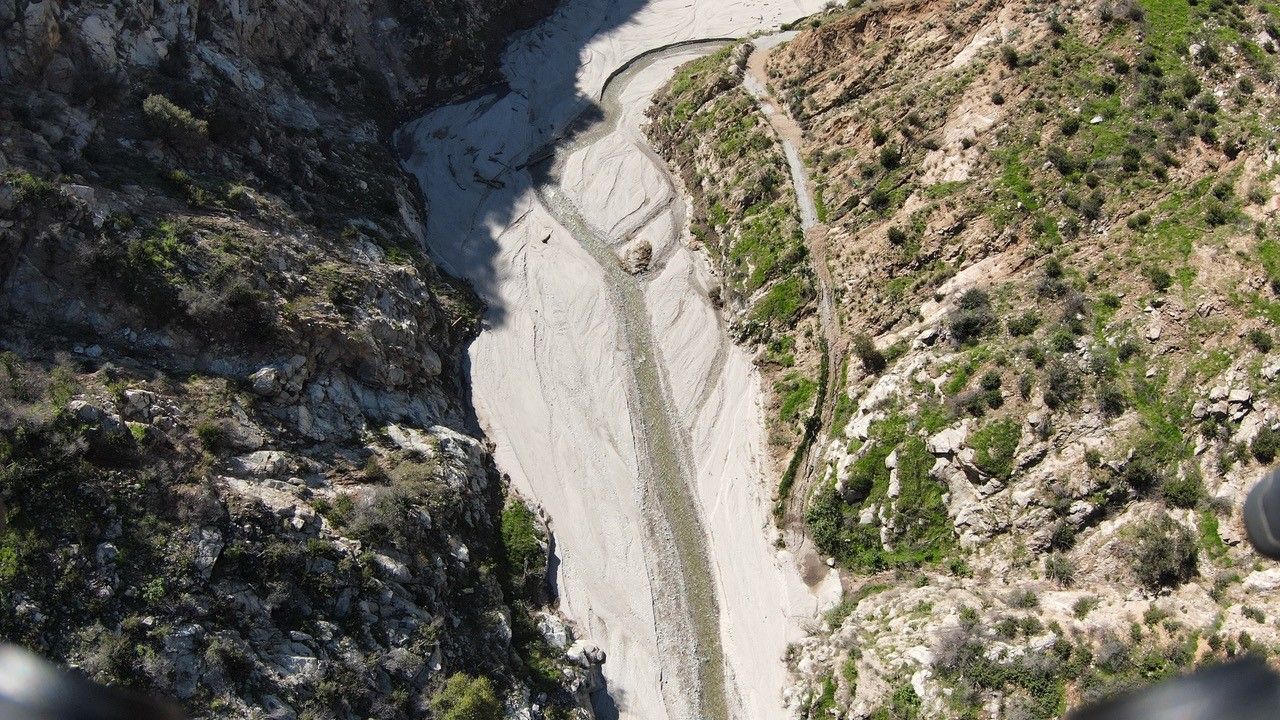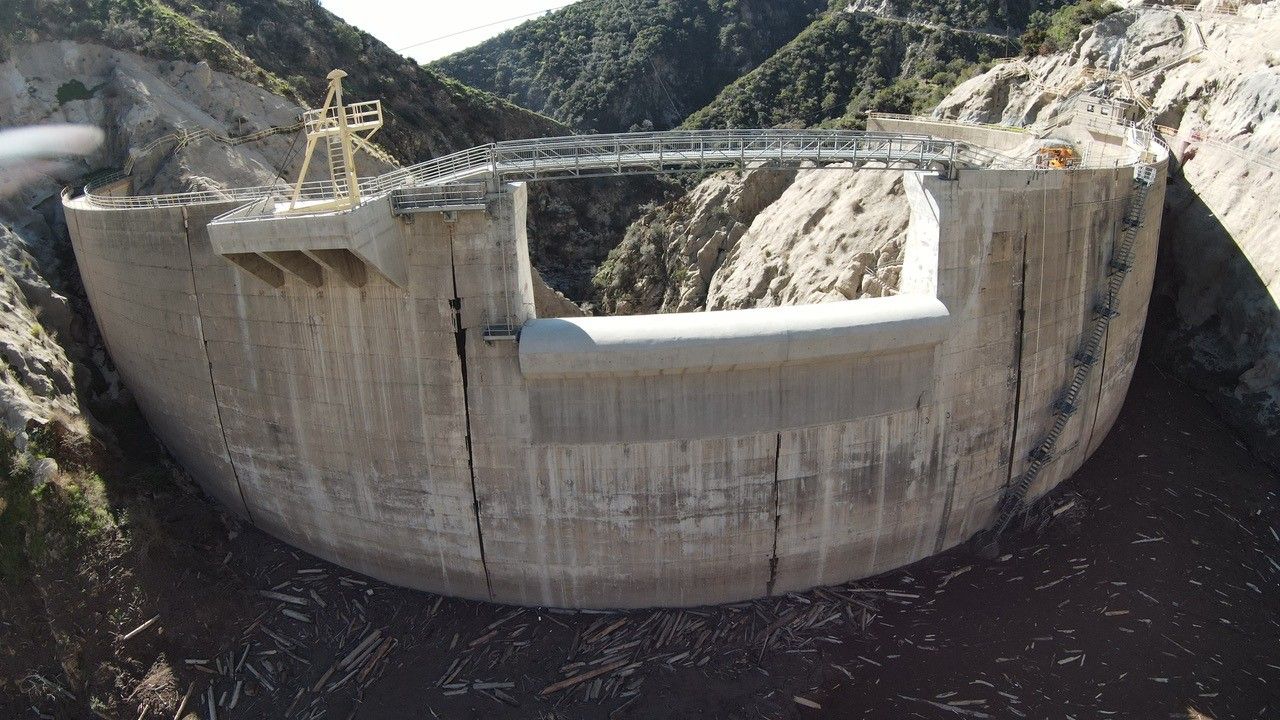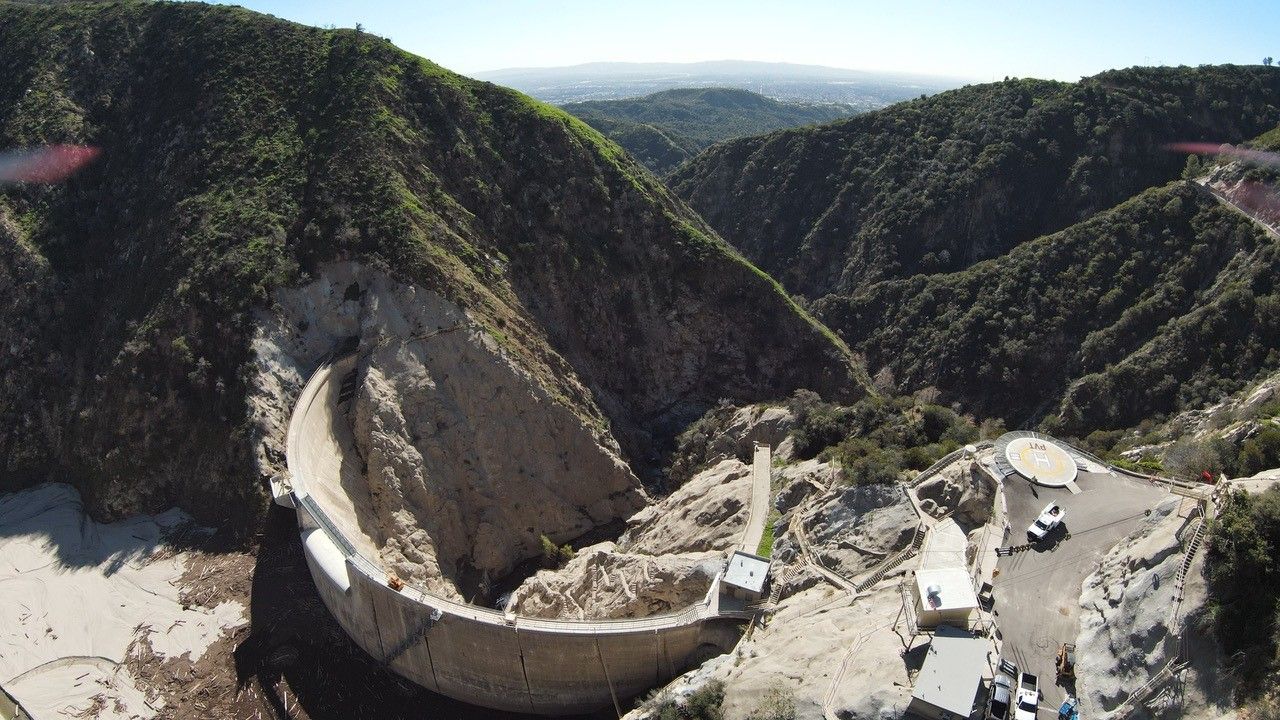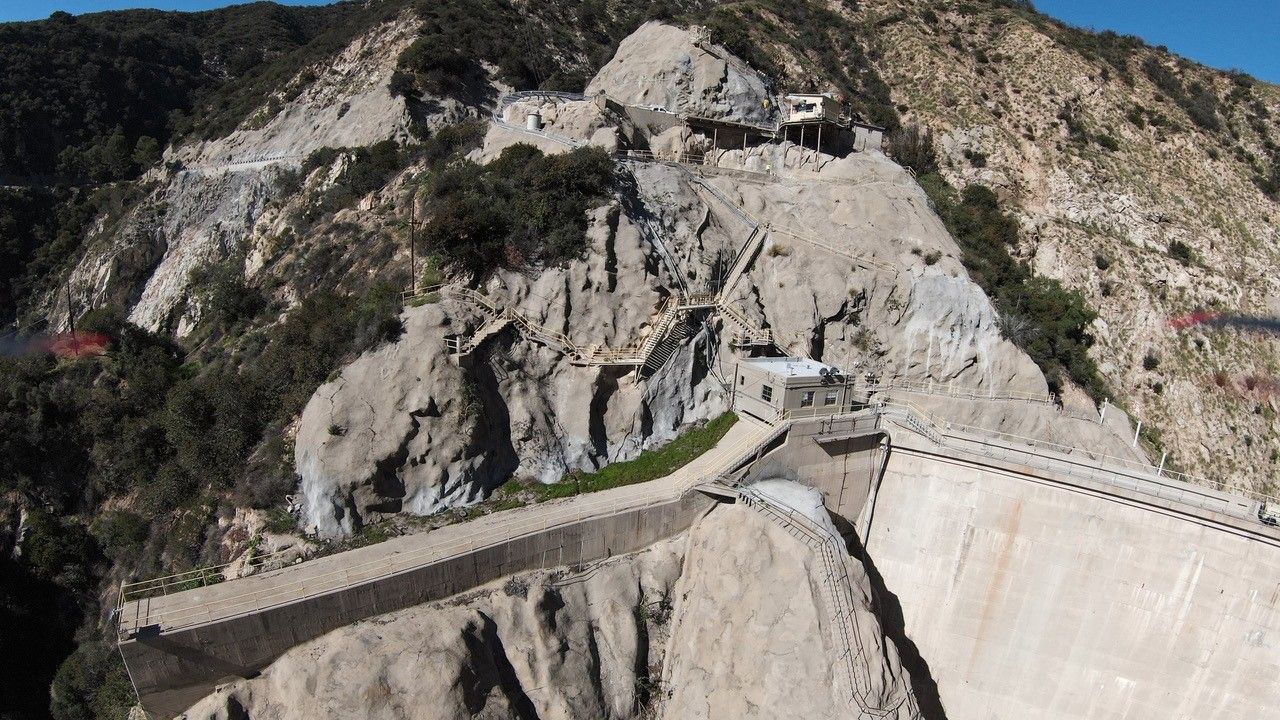Ames was recently awarded a project to remove more than half a million cubic yards of built-up sediment and debris from within the reservoir behind the 96-year-old Santa Anita Dam in California. The project will also help Los Angeles County Public Works regain functional use of the dam outlet valves for flood control and increase capture and storage of stormwater within the reservoir.
Ames crews began a similar project at the nearby San Gabriel Reservoir in 2022; however, the Santa Anita project has a much smaller footprint, significantly more difficult access, and the only approved sediment removal method is to utilize conveyor belts.








Also known as the Big Santa Anita Dam, the concrete arch dam structure is on Santa Anita Creek in the San Gabriel Mountains of Los Angeles County. Owned by the Los Angeles County Flood Control District, the dam provides the region with flood and debris control and water conservation. The dam is 225 feet high (about 20 stories) and 612 feet long, holding 858 acre-feet of water with a maximum capacity of 1,028 acre-feet. The catchment area for the dam is 10.8 square miles.

The significant loss of vegetation due to the 2020 Bobcat Fire has heightened the risk of flooding, debris flows, and mudslides. Such events could prevent LA County from performing controlled releases should all the control valves be blocked.
Another intense storm could unleash new surges of dirt, toppled trees, and boulders down the canyons that have been stripped of their binding vegetation, sending floodwaters over the dam spillways and into the cities of Arcadia, Sierra Madre, and Monrovia.
Ames crews will perform sediment and debris removal and install a half-mile stream diversion pipeline system.
Ames crews will perform sediment and debris removal to expose and regain function of three dam outlet control valves that release stormwater. This will require the installation of a half-mile stream diversion pipeline system to divert the active river around the reservoir.
A dewatering system consisting of deep wells, cutoff trenches, deep sumps, sediment tanks, and sand media filtration units will be installed within the reservoir to control groundwater and gain access to an existing concrete tunnel portal for Ames’ conveyor belt system to be installed.
Crews will deploy dozers, excavators, loaders and more than a mile and a half of conveyor belts to move sediment and debris material out of the reservoir through the existing 1,600-foot-long concrete outlet tunnel. The material will then be placed at a downstream disposal fill site. The conveyor belt system will have four crossings to maintain access for fire and emergency vehicles and LA County Flood Control Operations and Maintenance teams.
Mobilization is underway, and the tunnel portal access road work (next to an active streambed) will begin early this month. Season 1 of sediment removal operations will run from April 15 to Oct. 15. After a second removal season, all work will be complete by the end of 2024.
